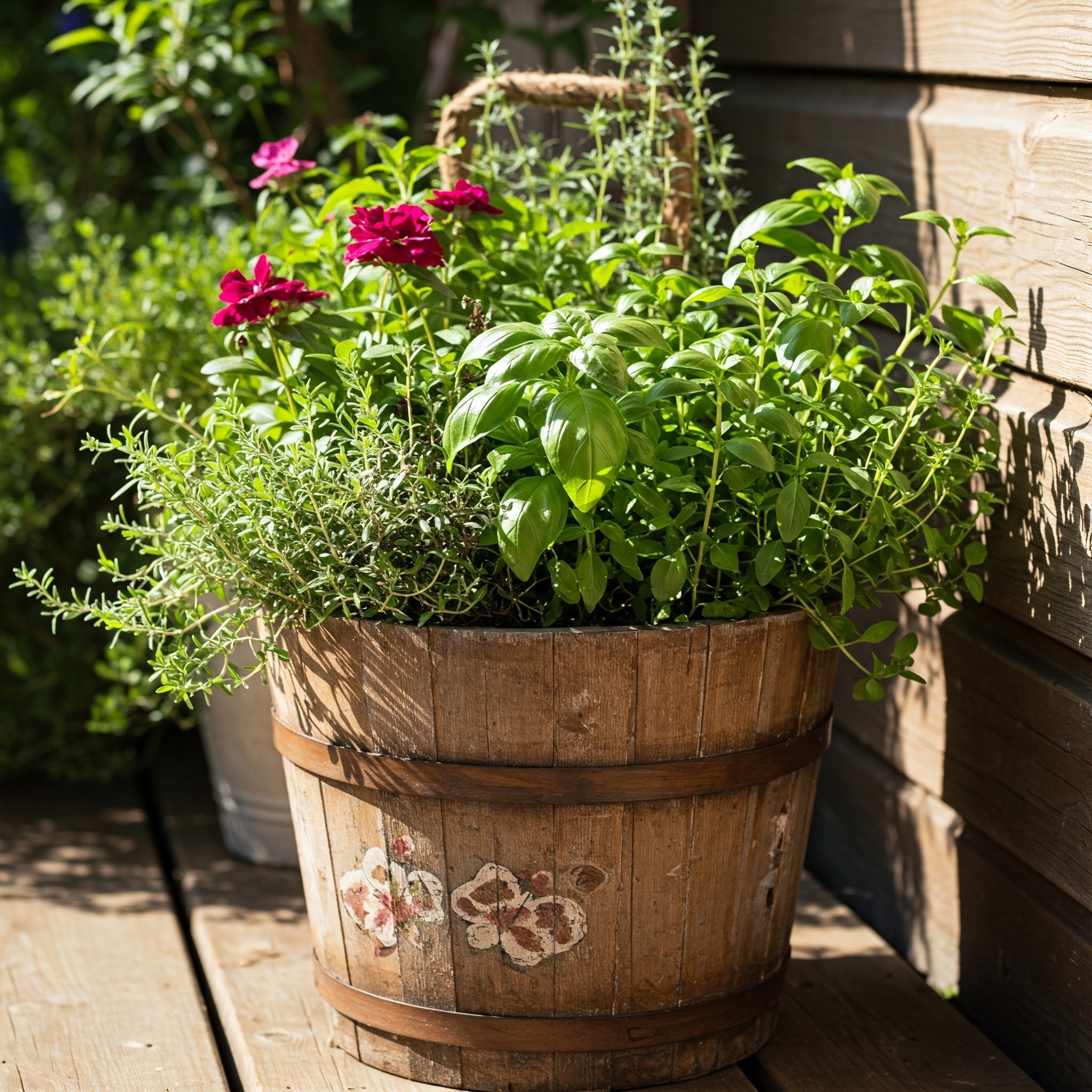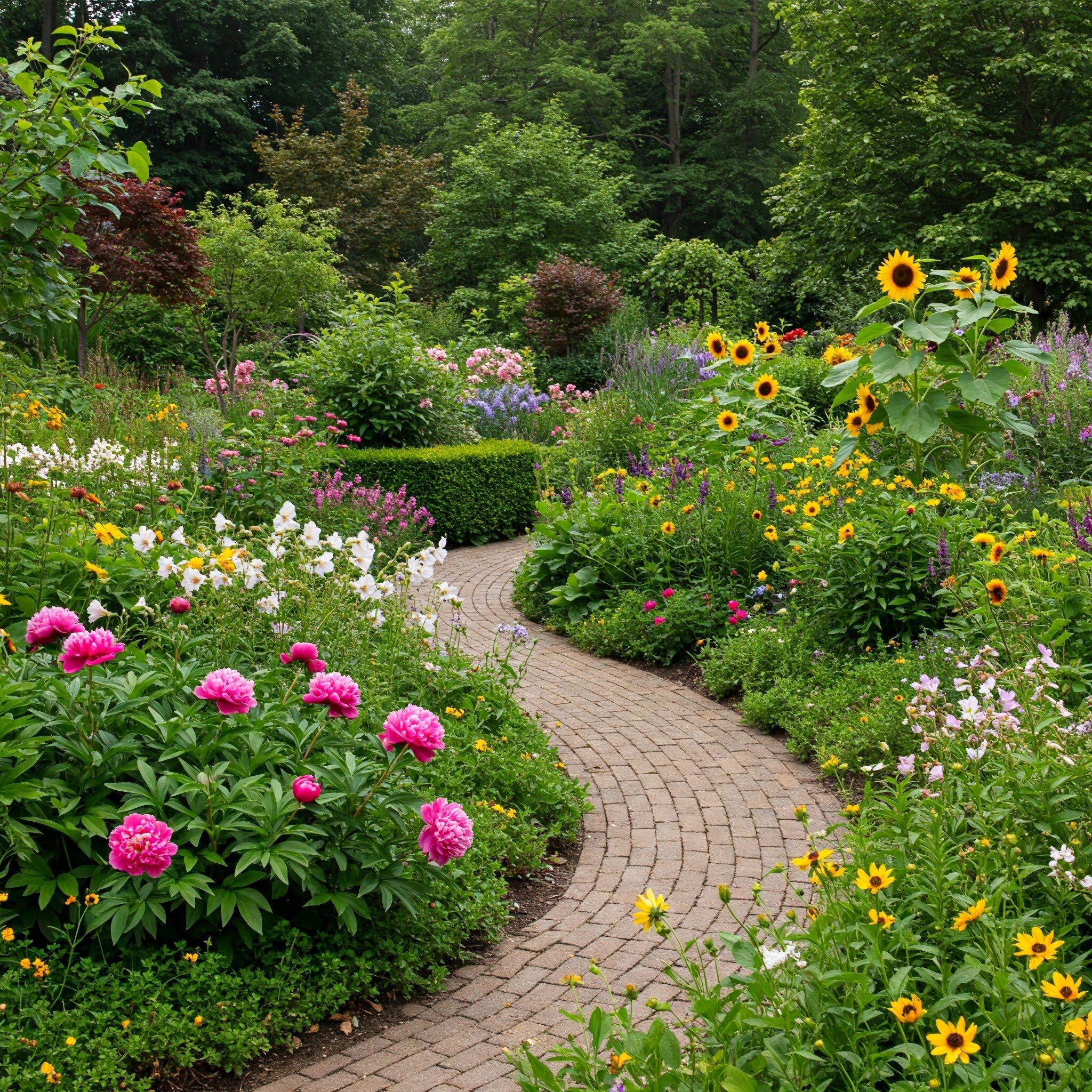How to Grow and Care for a Jane Magnolia Tree
Discover how to grow and care for a Jane Magnolia tree with this comprehensive guide. Learn expert tips for planting, pruning, and maintaining this stunning spring-blooming tree.
Who can resist the beauty of a blooming magnolia tree? Especially when it’s a Jane Magnolia Tree, with its eye-catching deep purple-pink blooms and compact size. The Jane Magnolia is one of the most popular varieties in the "Little Girl" series, known for its late spring bloom that often avoids frost damage. If you’re looking for a statement tree that adds color and charm to your garden, look no further.
In this guide on How to Grow and Care for a Jane Magnolia Tree, we’ll walk you through the entire process—from picking the perfect spot to ensuring your tree thrives year-round. So, whether you're planting your very first tree or adding to an already well-established garden, these tips will help you cultivate a healthy and beautiful Jane Magnolia.
How to Grow and Care for a Jane Magnolia Tree: The Basics
The first thing you’ll need to do when growing a Jane Magnolia tree is to find the perfect spot in your yard. These trees love sunlight but can also tolerate some shade.
Full Sun to Partial Shade: Jane Magnolias prefer full sun (at least 6 hours of sunlight per day), but they can also handle partial shade. Keep in mind, more sunlight means more vibrant blooms!
Sheltered from Strong Winds: Magnolia trees have large flowers that can be damaged by strong winds, so plant your tree in a location that offers some natural wind protection, like near a wall or fence.
Well-Draining Soil: Jane Magnolia trees don’t like soggy feet, so be sure to plant them in soil that drains well. You can improve drainage by mixing in some compost or sand if your soil is clay-heavy.
How to Plant a Jane Magnolia Tree
Planting your Jane Magnolia properly is crucial to its success. Follow these simple steps to get it off to a great start.
1. Best Time to Plant
Spring or Fall: The best time to plant a Jane Magnolia tree is in early spring or fall when the weather is cooler. This allows the tree to establish roots before the summer heat or winter cold.
2. Step-by-Step Planting Instructions
Dig the Hole: Dig a hole that’s twice as wide and just as deep as the root ball of your tree. This gives the roots plenty of room to spread out.
Loosen the Roots: Gently loosen the roots around the edges of the root ball before placing the tree in the hole. This helps the tree establish itself more easily.
Backfill with Soil: Place the tree in the hole, making sure the top of the root ball is level with the ground. Backfill the hole with soil, pressing down gently to eliminate air pockets.
Water Thoroughly: Water your newly planted tree deeply to help settle the soil and give the roots a good start.
How to Care for a Jane Magnolia Tree
1. Watering Your Magnolia
Watering your Jane Magnolia is one of the most important aspects of care, especially in the early stages of growth.
Water Regularly (But Don’t Overdo It): Young magnolia trees need consistent moisture, especially during their first year. Water your tree once a week, ensuring the soil stays moist but not soggy. Once the tree is established, you can reduce the frequency, watering only during dry spells.
Mulch for Moisture Retention: Adding a 2-3 inch layer of mulch around the base of your tree helps retain moisture and keeps the soil cool during the hot summer months. Just make sure not to pile the mulch against the trunk, as this can cause rot.
Caring for a young magnolia tree requires consistent watering, especially during its first year as it establishes roots. Water your tree once a week, making sure the soil stays moist but not waterlogged. Once the tree is well-established, you can reduce the watering frequency, only providing extra moisture during dry periods. To help retain moisture and protect the roots, apply a 2-3 inch layer of mulch around the base of the tree. This mulch will also help keep the soil cool in the summer, but be sure not to pile it against the trunk, as this can lead to rot and other issues.
2. Fertilizing Your Jane Magnolia Tree
Your Jane Magnolia will benefit from a little feeding now and then to keep it thriving.
Fertilize in Early Spring: Use a slow-release, balanced fertilizer in early spring, just as new growth begins. A fertilizer with a 10-10-10 or 14-14-14 ratio is ideal.
Avoid Over-Fertilizing: Too much fertilizer can result in lush green growth at the expense of flowers. A single application in early spring is usually all you need for the year.
Fertilizing your magnolia tree in early spring is essential to encourage healthy growth and vibrant blooms. As new growth begins, apply a slow-release, balanced fertilizer with a 10-10-10 or 14-14-14 ratio to provide your tree with the nutrients it needs. Be careful not to over-fertilize, as this can lead to excessive leafy growth and fewer flowers. Typically, one application in early spring is sufficient to support your magnolia for the entire year. By providing the right amount of fertilizer at the right time, you’ll help your tree thrive while ensuring beautiful blooms throughout the season.
3. Pruning Tips
Pruning your Jane Magnolia is important for shaping the tree and removing any dead or damaged branches. However, these trees don’t require heavy pruning.
Prune After Blooming: The best time to prune a Jane Magnolia is just after it finishes blooming in late spring or early summer. Pruning too early or too late can reduce the number of flowers next season.
Shape the Tree: If necessary, prune the tree to shape it by cutting back any stray or crossing branches. Be careful not to remove too much at once, as this can stress the tree.
Remove Dead Wood: Cut back any dead, damaged, or diseased branches as soon as you spot them to keep your tree healthy and strong.
Pruning your Jane Magnolia at the right time is key to maintaining its health and beauty. The ideal time to prune is just after it finishes blooming in late spring or early summer. Pruning too early or too late can reduce the number of flowers the tree produces in the following season. When pruning, focus on shaping the tree by carefully cutting back any stray or crossing branches, but avoid removing too much at once to prevent stressing the tree. Additionally, always remove any dead, damaged, or diseased branches as soon as you notice them to keep your Jane Magnolia healthy and strong. With proper pruning, your tree will continue to thrive and produce stunning blooms year after year.
How to Grow and Care for a Jane Magnolia Tree: Common Problems
Like all plants, the Jane Magnolia can run into a few issues. Here’s how to address common problems.
1. Pests
While magnolias are relatively pest-resistant, a few common garden pests may still make an appearance.
Aphids: If you notice curling leaves or sticky residue on your tree, you might be dealing with aphids. Use insecticidal soap or neem oil to treat infestations.
Scale Insects: These small, shell-like insects attach themselves to the stems and branches, sucking the sap and weakening the tree. Prune out any heavily infested branches and treat the tree with horticultural oil.
2. Diseases
Magnolia trees are prone to a few diseases, but nothing that can’t be managed with proper care.
Leaf Spot: Fungal infections can cause unsightly brown or black spots on the leaves. To prevent this, avoid getting the leaves wet when watering, and ensure proper air circulation by thinning out the branches.
Root Rot: Overwatering or poorly draining soil can lead to root rot. Ensure your tree is planted in well-draining soil and avoid watering too frequently.
How to Grow and Care for a Jane Magnolia Tree in Containers
If you don’t have the garden space for a full-sized Jane Magnolia, you can still enjoy its beauty by growing it in a container.
1. Choosing the Right Pot
Size Matters: Pick a large container—at least 18-24 inches wide and deep—to give the roots plenty of room to grow.
Drainage is Key: Make sure your container has drainage holes to prevent water from pooling at the bottom and causing root rot.
When growing plants in containers, choosing the right size is crucial for healthy root development. Opt for a large container, ideally 18-24 inches wide and deep, to provide plenty of room for your plant’s roots to spread. Ample space promotes strong growth and reduces the need for frequent repotting. Equally important is proper drainage. Ensure your container has drainage holes to prevent excess water from pooling at the bottom, as standing water can lead to root rot and other issues. With the right container size and drainage, your plant will have the best conditions to thrive in a potted environment.
2. Watering and Feeding Container Magnolias
More Frequent Watering: Container-grown plants dry out more quickly than those in the ground, so check the soil moisture regularly. Water deeply when the top inch of soil feels dry.
Regular Feeding: Use a balanced liquid fertilizer every 6-8 weeks during the growing season to ensure your potted magnolia has enough nutrients to thrive.
Caring for a potted magnolia requires a bit more attention to watering and feeding compared to plants grown in the ground. Since container-grown plants dry out more quickly, it’s important to check the soil moisture regularly. Water deeply whenever the top inch of soil feels dry to keep your magnolia healthy and hydrated. Additionally, to ensure the plant receives the necessary nutrients, feed it with a balanced liquid fertilizer every 6-8 weeks during the growing season. This regular feeding will support strong growth and beautiful blooms, helping your potted magnolia thrive in its container environment.
Conclusion
There’s no denying that the Jane Magnolia Tree is a gorgeous addition to any garden, thanks to its stunning flowers and manageable size. Now that you’ve got the lowdown on How to Grow and Care for a Jane Magnolia Tree, you’re ready to plant and nurture this beauty in your yard. From choosing the right location to proper watering and pruning techniques, the steps are straightforward, and the rewards are plenty. With the right care, your Jane Magnolia will be the star of your garden, providing breathtaking blooms year after year. Happy gardening!
Frequently Asked Questions
1. How tall does a Jane Magnolia tree grow?
A mature Jane Magnolia typically grows between 10 and 15 feet tall, making it an excellent choice for smaller gardens or as a focal point in larger landscapes.
2. When does a Jane Magnolia tree bloom?
Jane Magnolias bloom in late spring, usually from April to May, with large, tulip-shaped flowers in shades of pink and purple. In some cases, you may even get a second, lighter bloom in late summer.
3. Is a Jane Magnolia tree deer-resistant?
Unfortunately, magnolias are not deer-resistant, so if deer are a problem in your area, consider using deer repellents or protective fencing to keep them away from your tree.
4. Can I grow a Jane Magnolia tree indoors?
While magnolias generally prefer outdoor environments, you can grow them indoors in large containers. Just be sure to place the tree near a sunny window and provide proper care, including regular watering and feeding.
5. How often should I prune my Jane Magnolia tree?
Jane Magnolias don’t need heavy pruning. Just prune lightly after the tree blooms in spring to shape the plant and remove any dead or damaged branches.
































